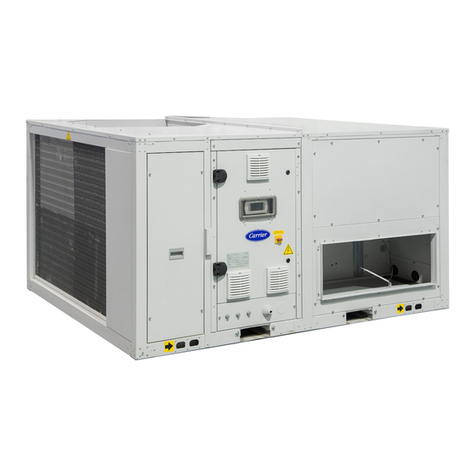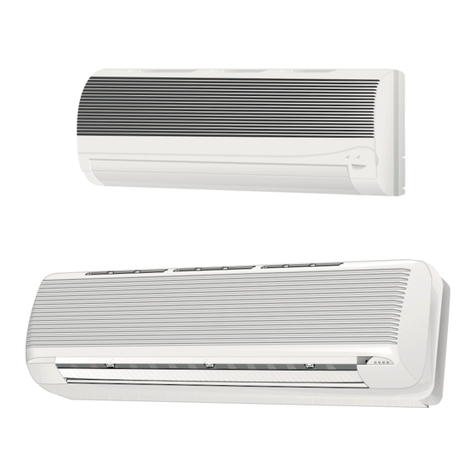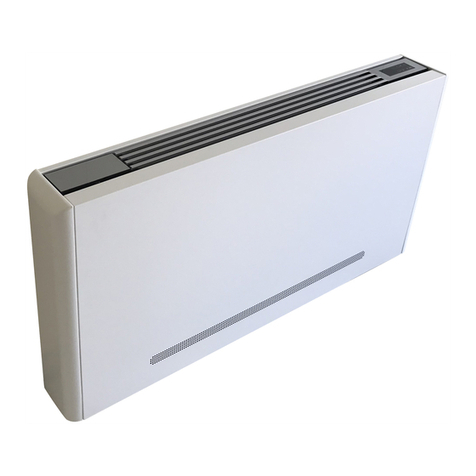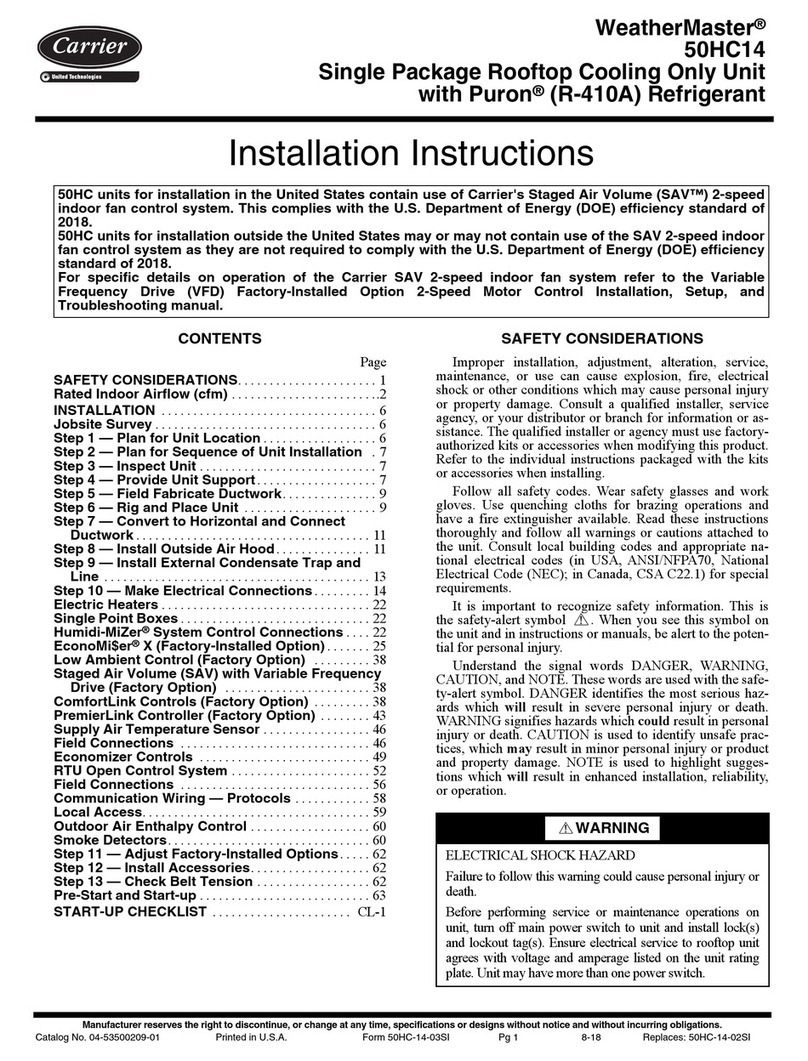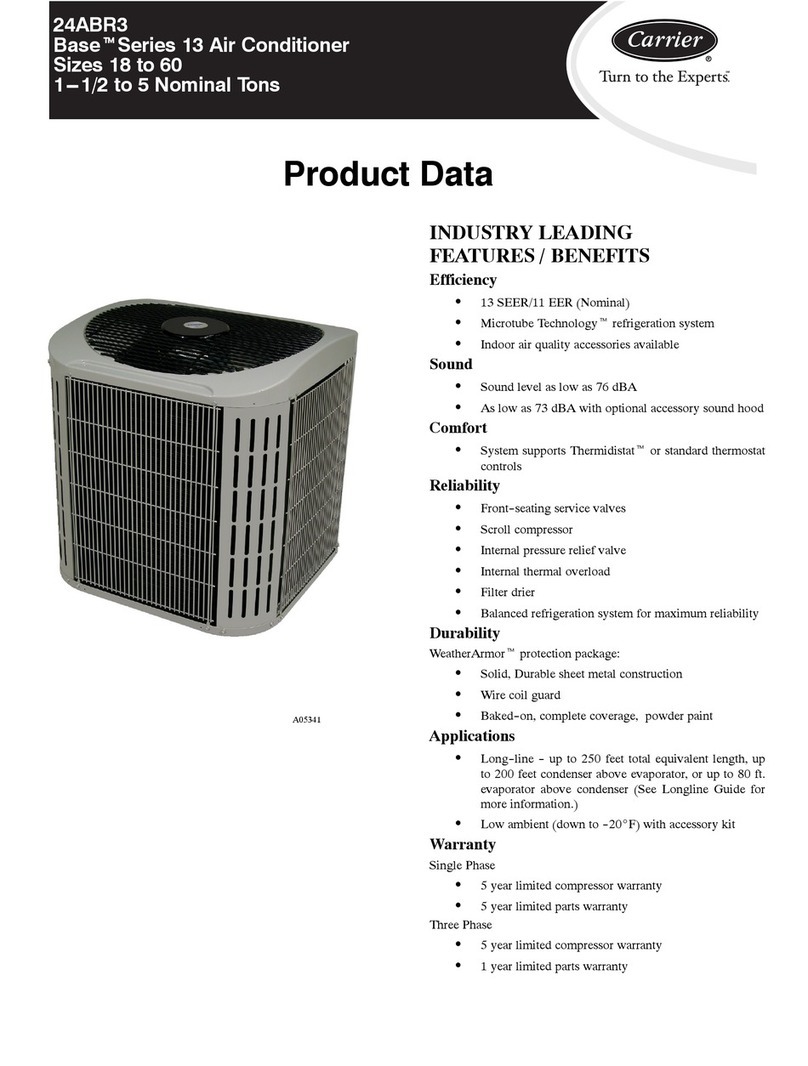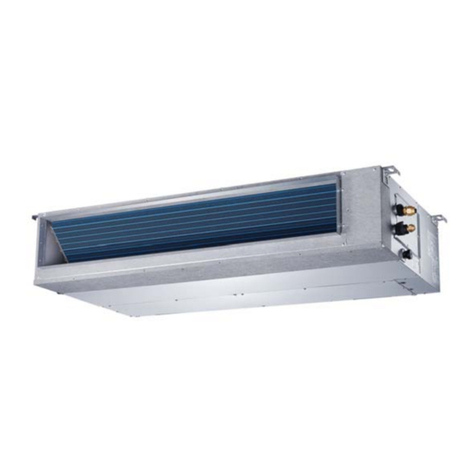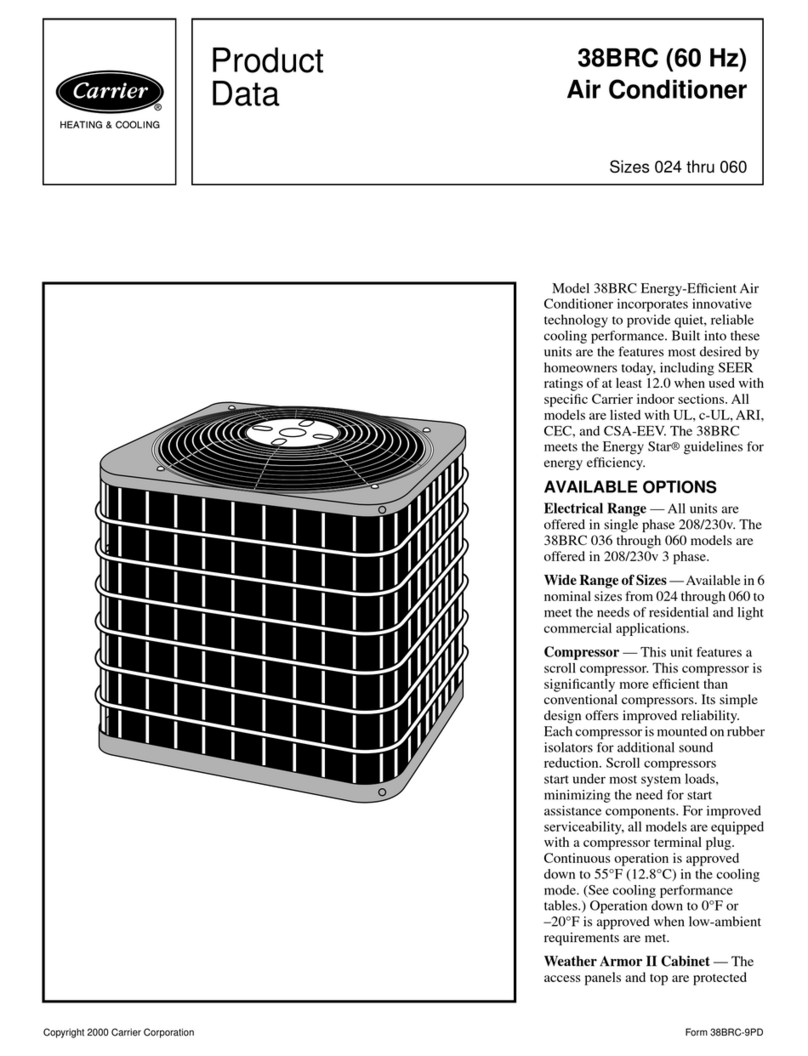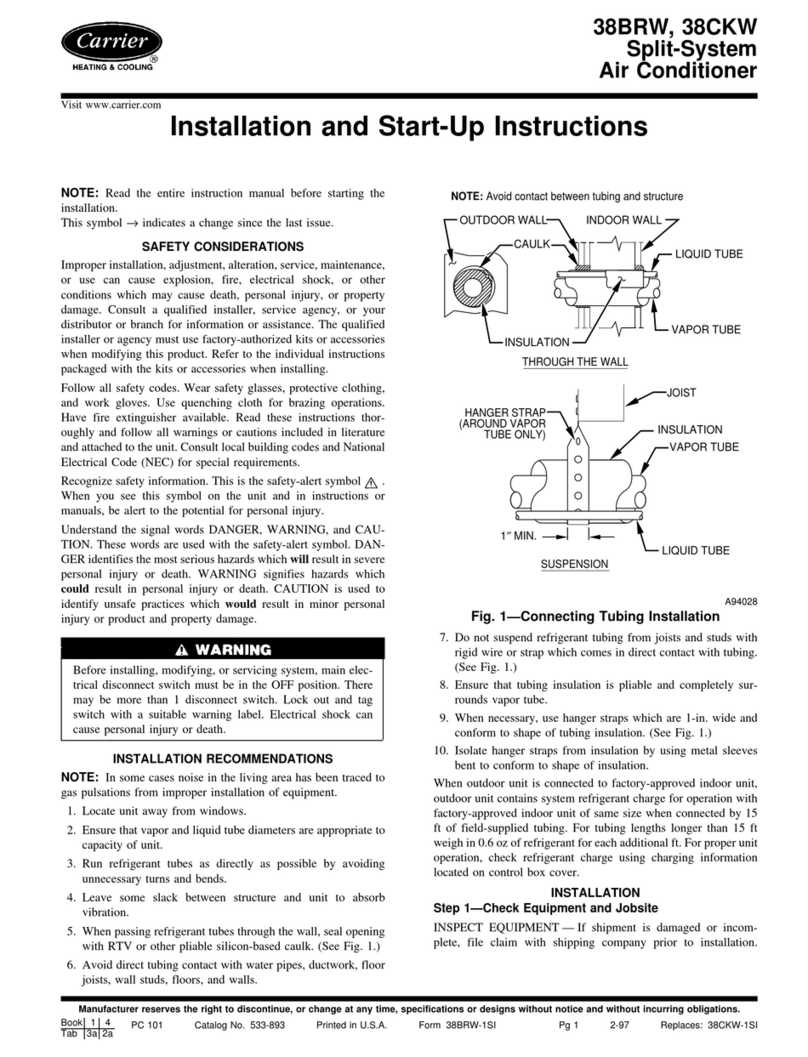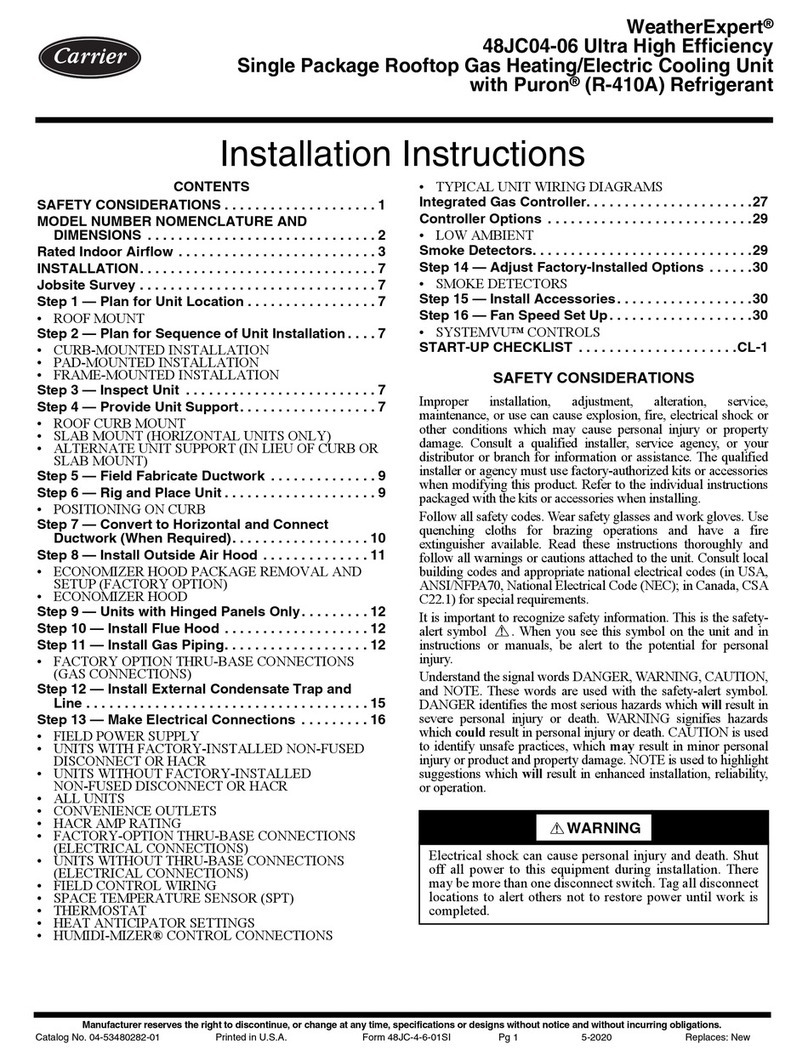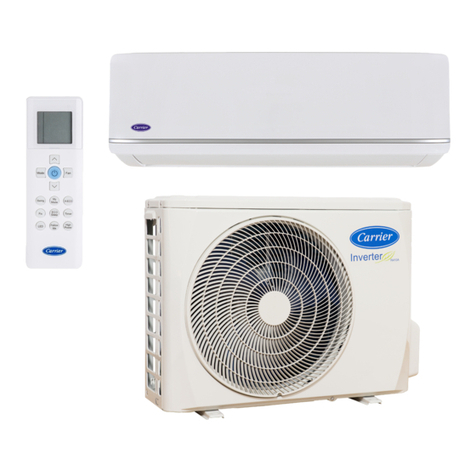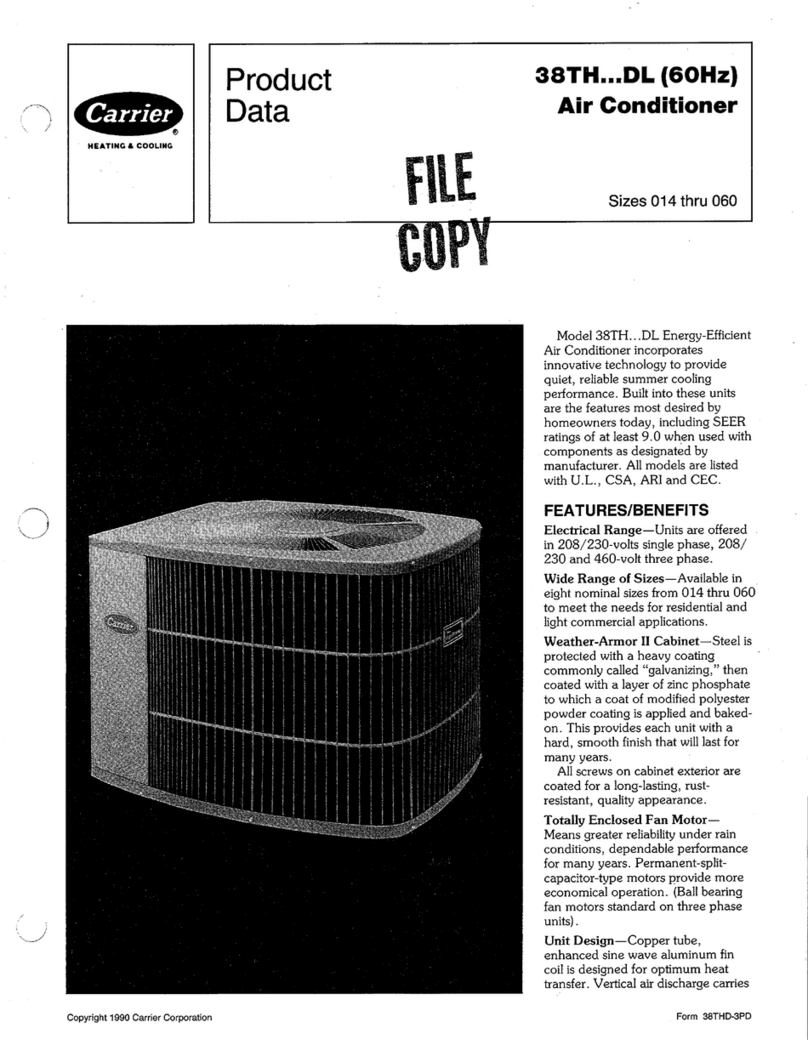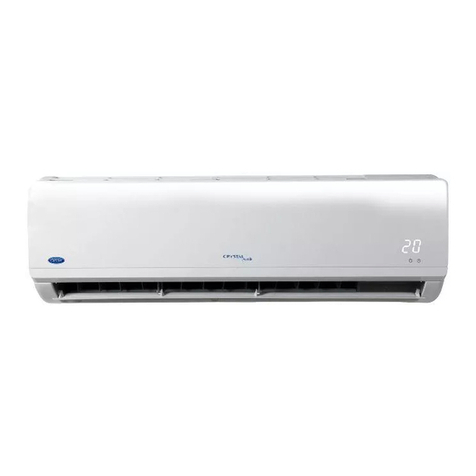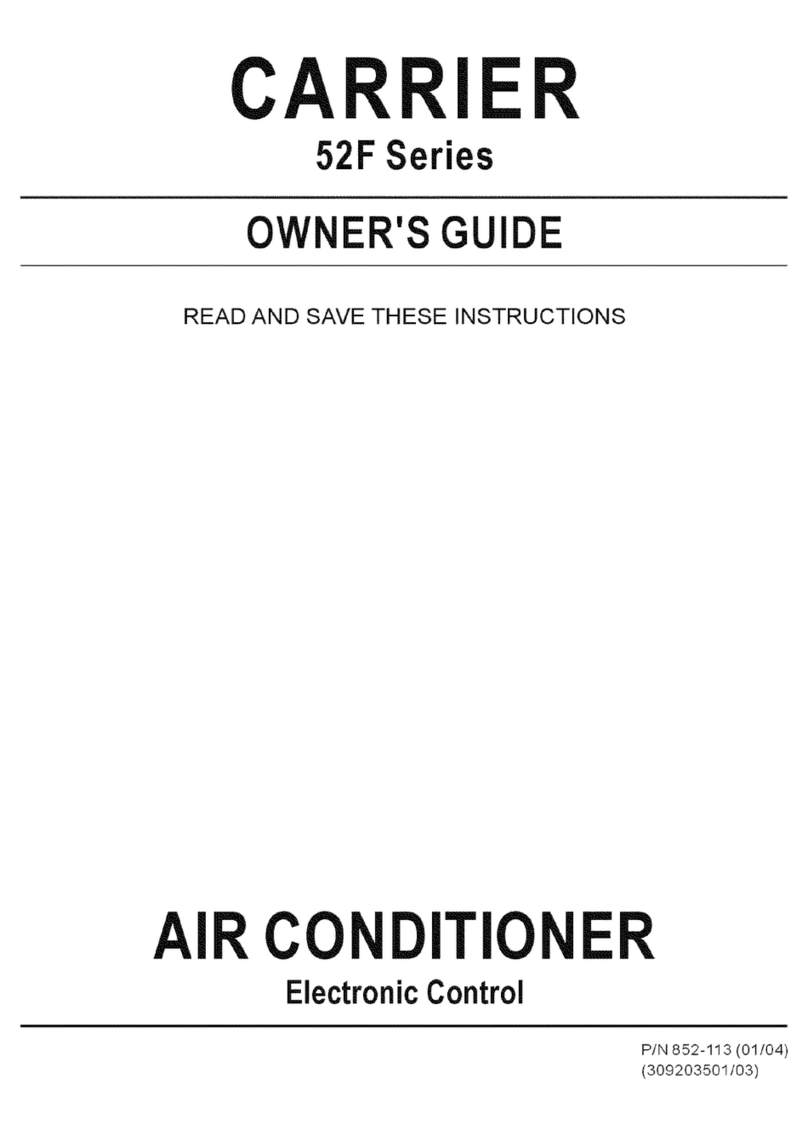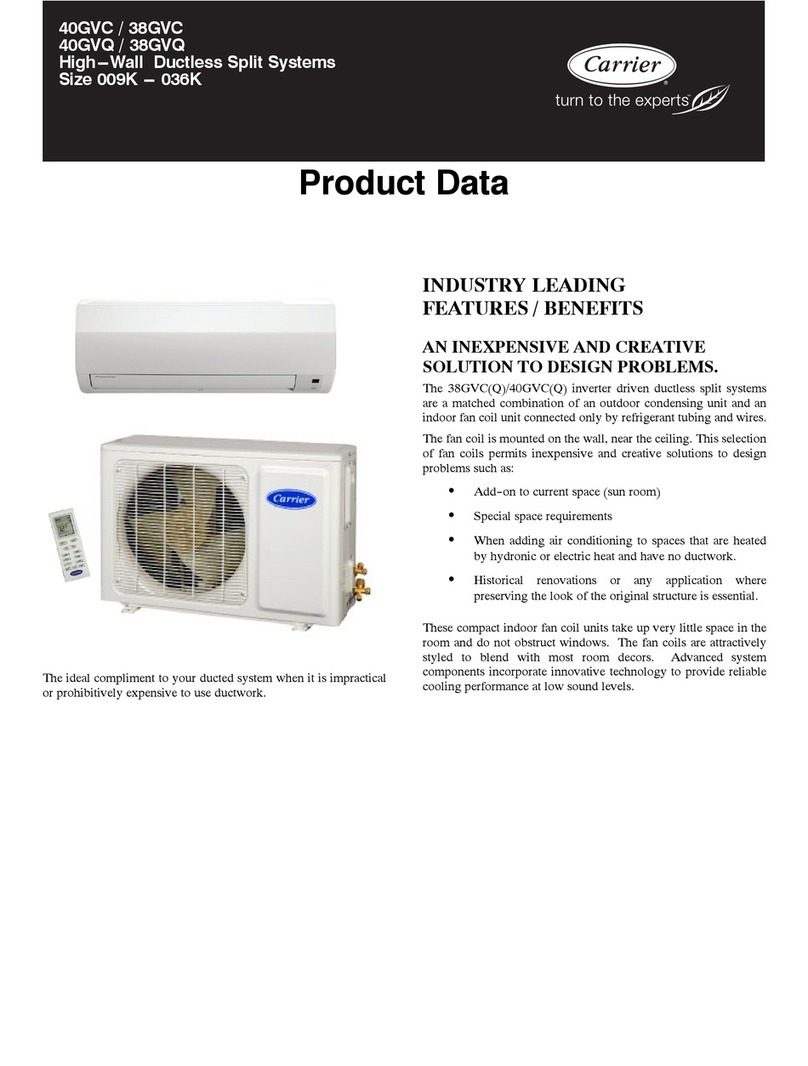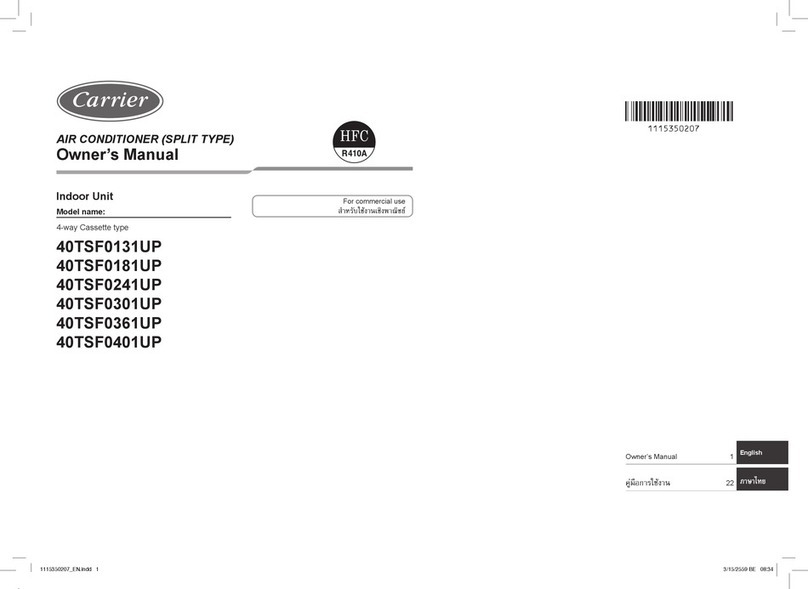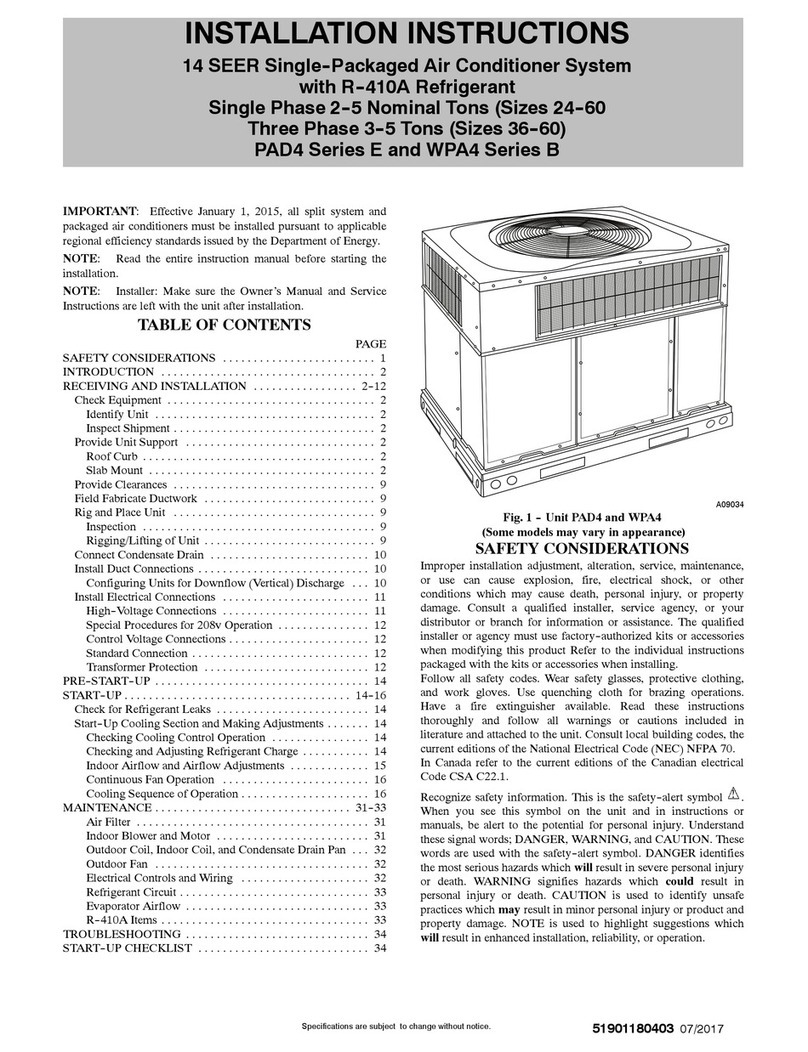
2
from thermistors T1 through T5 and transducers T6 through
T8. See Table 2. The MBB also receives the Current Sensor
inputs for compressors A1, B1 and C1 and other discrete or
digital inputs. See Table 3. The MBB reads space temperature
(SPT) from either a T55, T56 or T58 device and space temper-
ature offset (SPTO) from a T56 device. See Table 4 and Field-
Installed Accessories section below. The MBB controls 11 re-
lays. See Table 5.
Economizer Control Board (ECB) — The ECB con-
trols the economizer actuator. See Fig. 6. Relay 6 on the ECB
supplies 24 VAC to the actuator. The control signal from the
ECB uses the Belimo communication protocol. The ECB has
inputs for Indoor Air Quality (IAQ), Outdoor Air Quality
(OAQ), and enthalpy. See Table 4. It also controls two power
exhaust motors (PE1 and PE2). See Table 5.
By communicating with the ECB, the economizer actuator
is able to provide the damper position and diagnostic informa-
tion to the ComfortLink controller. The damper position is dis-
played as EC.AP under Outputs/Econ on the Scrolling Mar-
quee. Diagnostic information is displayed via Alert T414.
More information about these alarms is contained in the
Alarms and Alerts section.
Scrolling Marquee Display — This device is the key-
pad interface used to access rooftop information, read sensor
values, and test the unit. See Fig. 7. The marquee display is a
4-key, 4-character, 16-segment LED (light-emitting diode)
display. Eleven mode LEDs are located on the display as well
as an Alarm Status LED. See Marquee Display Usage section
on page 11 for further details.
Board Addresses — The Main Base Board (MBB) has
a 3-position instance jumper that is set at the factory to “1.”
Do not change this setting. The ECB has a 4-position DIP
switch. Each DIP switch is set to “0” at the factory. Do not
change this setting.
Control Module Communication
RED LED — Proper operation of the control boards can be
visually checked by looking at the red status LEDs. When
operating correctly, the red status LEDs should blink in unison
at a rate of once every 2 seconds. If the red LEDs are not blink-
ing in unison, verify that correct power is being supplied to all
modules. Also, be sure that the Main Base Board is supplied
with the current software. If necessary, reload current software.
If the problem still persists, replace the MBB. A board LED
that is lit continuously or blinking at a rate of once per second
or faster indicates that the board should be replaced.
GREEN LED — The MBB has one green LED. The Local
Equipment Network (LEN) LED should always be blinking
whenever power is on. All other boards have a LEN LED that
will blink whenever power is on. If LEN LED is not blinking,
check LEN connections for potential communication errors
(J3 and J4 connectors). Communication between modules is
accomplished by a 3-wire sensor bus. These 3 wires run in
parallel from module to module. The J4 connector on the MBB
provides both power and communication directly to the
marquee display.
YELLOW LED — The MBB has one yellow LED. The
Carrier Comfort Network (CCN) LED will blink during times
of network communication.
Carrier Comfort Network Interface — The 48/50HG
units can be connected to the CCN if desired. The communica-
tion bus wiring is a shielded, 3-conductor cable with drain wire
and is field supplied and installed. See Table 6 for wiring infor-
mation. The system elements are connected to the communica-
tion bus in a daisy chain arrangement. The positive pin of each
system element communication connector must be wired to the
positive pins of the system elements on either side of it. This is
also required for the negative and signal ground pins of each
system element. Wiring connections for CCN should be made
at TB2. See Fig. 1 and 2. Consult the CCN Contractor's Manu-
al for further information.
NOTE: Conductors and drain wire must be 20-AWG (Ameri-
can Wire Gage) minimum stranded, tinned copper. Individual
conductors must be insulated with PVC, PVC/nylon, vinyl,
Teflon, or polyethylene. An aluminum/polyester 100% foil
shield and an outer jacket of PVC, PVC/nylon, chrome vinyl,
or Teflon with a minimum operating temperature range of
–20 C to 60 C is required. See Table 6.
It is important when connecting to a CCN communication
bus that a color-coding scheme be used for the entire network
to simplify the installation. It is recommended that red be used
for the signal positive, black for the signal negative and white
for the signal ground. Use a similar scheme for cables contain-
ing different colored wires.
At each system element, the shields of its communication
bus cables must be tied together. If the communication bus is
entirely within one building, the resulting continuous shield
must be connected to a ground at one point only. If the commu-
nication bus cable exits from one building and enters another,
the shields must be connected to grounds at the lightning
suppressor in each building where the cable enters or exits the
building (one point per building only). To connect the unit to
the network:
1. Turn off power to the control box.
2. Cut the CCN wire and strip the ends of the red (+), white
(ground), and black (–) conductors. (Substitute appropri-
ate colors for different colored cables.)
3. Connect the red wire to (+) terminal on TB2 of the plug,
the white wire to COM terminal, and the black wire to the
(–) terminal.
4. The RJ14 CCN connector on TB2 can also be used, but is
only intended for temporary connection (for example, a
laptop computer running Service Tool).
5. Restore power to unit.
Field-Installed Accessories
SPACE TEMPERATURE SENSOR (T55) — The T55 Space
Temperature Sensor (Part No. CEC0121448-01) is a field-
installed accessory. The sensor is installed on a building interi-
or wall to measure room air temperature. The T55 sensor also
includes an override button on the front cover to permit occu-
pants to override the Unoccupied Schedule (if programmed).
The jumper wire in the installer’s packet must be connected
between R and W1 when using a T55 device. See Fig. 8-10.
SPACE TEMPERATURE SENSOR (T56) — The T56 Space
Temperature Sensor (Part No. CEC0121503-01) is a field-
installed accessory. This sensor includes a sliding scale on the
front cover that permits an occupant to adjust the space temper-
ature set point remotely. The jumper wire in the installer’s
packet must be connected between R and W1 when using a
T56 device. See Fig. 8, 9, and 11.
IMPORTANT: A shorted CCN bus cable will prevent
some routines from running and may prevent the unit
from starting. If abnormal conditions occur, unplug the
connector. If conditions return to normal, check the
CCN connector and cable. Run new cable if necessary.
A short in one section of the bus can cause problems
with all system elements on the bus.

